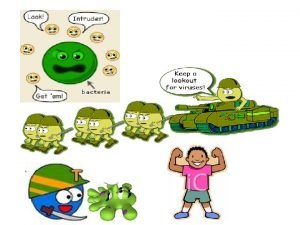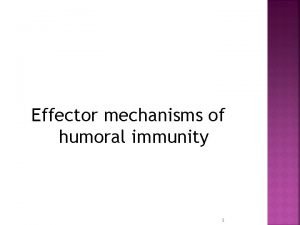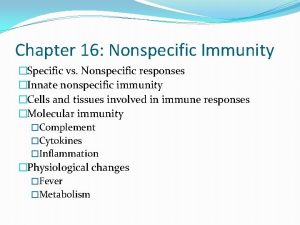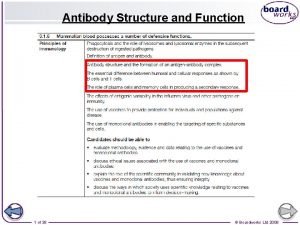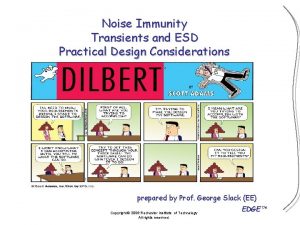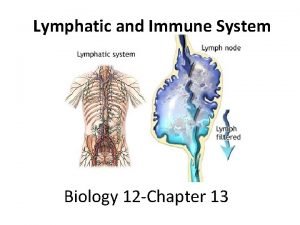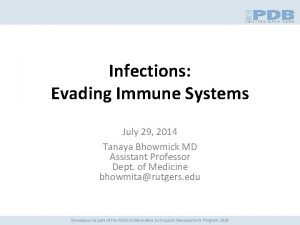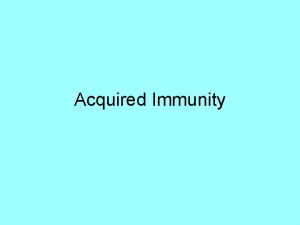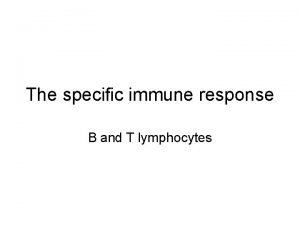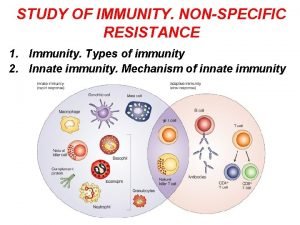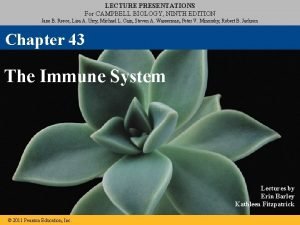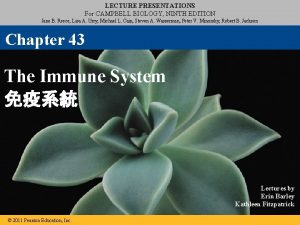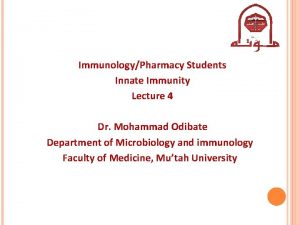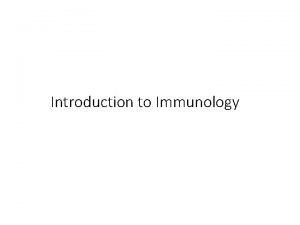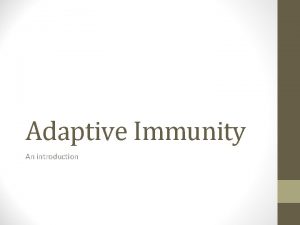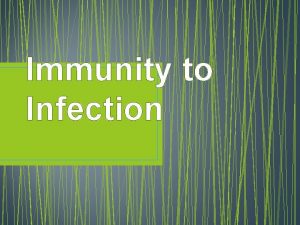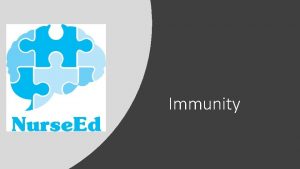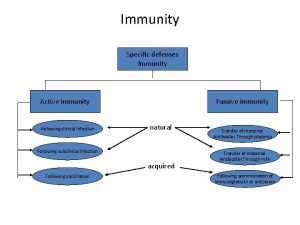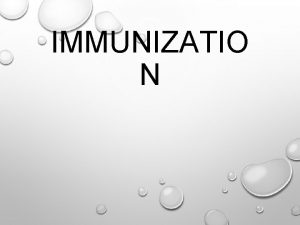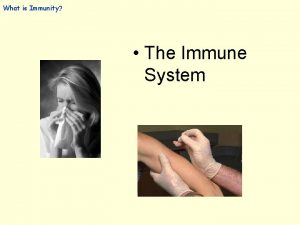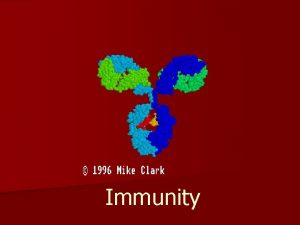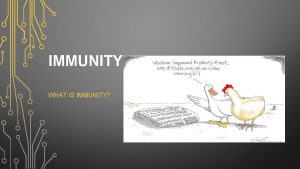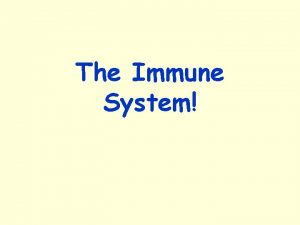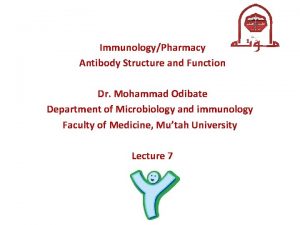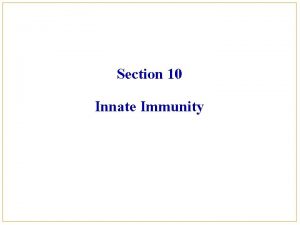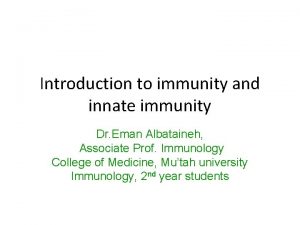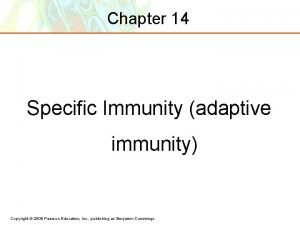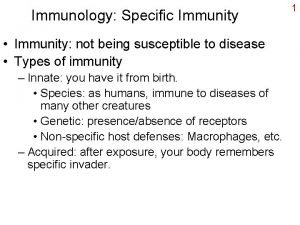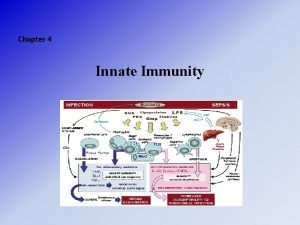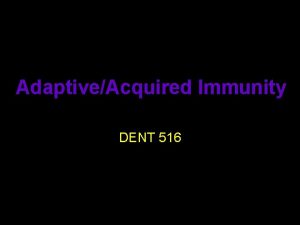ImmunologyPharmacy Students Introduction to Immunity Lecture 1 Dr























- Slides: 23

Immunology/Pharmacy Students Introduction to Immunity Lecture 1 Dr. Mohammad Odibate Department of Microbiology and immunology Faculty of Medicine, Mu’tah University

Learning objectives 1 - Define and describe the characteristics of: Antigen Immunogen Hapten Epitope adjuvant 2 - Identify the factors that affect the immunogenicity 3 - Understand the concept of antigen cross reactivity 4 - Differentiate between active, passive, and adoptive immunity

History of Immunology The earliest known reference to immunity was during the plague of Athens in 430 BC In the 18 th century, scientist made experiments with scorpion venom and observed that certain dogs and mice were immune to this venom.

Introduction Immunology: study of the components and function of the immune system. Immune system: Molecules, cells, tissues and organs which provide non-specific and specific protection against: –Microorganisms; –Microbial toxins; –Tumor cells.

Basic definitions Antigens & Immunogens Haptens Epitopes Adjuvants

Antigens & Immunogens Immunogen immune system Activation of immune Response Antigen immune system Activation of immune Response No effect Immunogen: is a substance capable of inducing a specific immune response, resulting in the formation of antibodies or active white blood cells (WBCs). Antigen: any molecule that can react with the immune system without the necessary to induce an immune response

Antigens & Immunogens Antigens (Food particles, dust, microorganisms) + + = No = = & Active WBCs Active & WBCs = Antigen is considered immunogen Antigen is considered non-immunogen (Just an antigen)

Antigens & Immunogens Blood antigens in this case are considered Non-immunogens (Autologous donation) Blood group A Blood group B Blood antigens in this case are considered immunogens (Heterologous donation)

Factor affecting Immunogenicity Two groups of factors determine degree of immunogenicity Nature of the immunogen Inc rea Ø Foreignness Ø Molecular weight Ø Chemical structure complexity sin g Im mu no ge nic ity

Factor affecting Immunogenicity Two groups of factors determine degree of immunogenicity Nature of the immunogen Biological factors Ø Foreignness Ø Dosage Ø Molecular weight Ø Route of administration Subcutaneous > Intravenous > Intragastric Ø Chemical structure complexity Ø Individual genetic difference Ø Adjuvants

Adjuvants Substances which when mixed with an immunogen enhance the immune response against the immunogen (Immunopotentiator or Immuno-booster). Examples a. Inorganic compounds: alum, aluminum hydroxide b. Mineral oil: paraffin oil c. Bacterial products: killed bacteria Bordetella pertussis, Mycobacterium bovis, toxoid.

Adjuvants Mode of action Vaccine + adjuvant Extend the presence of antigen in the blood = Potentiating immune response by Help the antigen uptake by macrophages Activate macrophages and lymphocytes Support the production of cytokines

Haptens are partial antigens that themselves cannot cause the production of immune lymphocytes or antibodies (too small to be immunogenic). e. g. , antibiotics, analgesics, and other low-molecular weight compounds. If a hapten is coupled to a larger carrier molecule as albumins, globulins, or synthetic polypeptides it becomes immunogen complete antigen (immunogen)

Haptens

Haptens Exposure to hapten and carrier protein Hapten No activation for immune response (No antibody production) Carrier protein Activation for immune response and antibody production

Autocoupling haptens Unique class of haptens which possess the ability to form spontaneous covalent bonds with self proteins to create new antigens in vivo The new antigens are the basis for Autoimmune diseases Drug allergy/Ig. E cross reactivity

Autocoupling haptens Autoimmune diseases

Epitopes Ø Called antigenic determinants Ø Are very small (e. g. , just four or five amino acid or monosaccharide residues) Epitope Antigen

Epitopes Epitope Antibodies are produced after an immune response

Epitopes multivalent antigen with similar epitopes Multivalent antigen with different epitopes

Characteristics of the Immune response Specificity Discrimination between “self” and “nonself” Memory

Routes of acquiring immunity Active Immunity: Reaction of your own immune system Passive Immunity: Borrow immune agents from other person

Routes of acquiring immunity Acquired Immunity
 Difference between acquired immunity and innate immunity
Difference between acquired immunity and innate immunity 01:640:244 lecture notes - lecture 15: plat, idah, farad
01:640:244 lecture notes - lecture 15: plat, idah, farad What is health psychology
What is health psychology Eduardo de lete
Eduardo de lete Primary vs secondary immune response
Primary vs secondary immune response What is immunity
What is immunity Effector mechanism of humoral immunity
Effector mechanism of humoral immunity Nonspecific vs specific immunity
Nonspecific vs specific immunity When was canra passed
When was canra passed The difference between humoral and cell mediated immunity
The difference between humoral and cell mediated immunity Adaptive noise immunity
Adaptive noise immunity Chapter 13 lymphatic system and immunity
Chapter 13 lymphatic system and immunity Keva immunity booster benefits
Keva immunity booster benefits Assis prof
Assis prof Innate immunity examples
Innate immunity examples Emc standard
Emc standard Aids
Aids Acquired immunity definition
Acquired immunity definition Immunity
Immunity Active vs passive immunity
Active vs passive immunity Non specific immunity
Non specific immunity Non specific innate immunity
Non specific innate immunity Cell mediated immunity
Cell mediated immunity Cell mediated immunity
Cell mediated immunity





